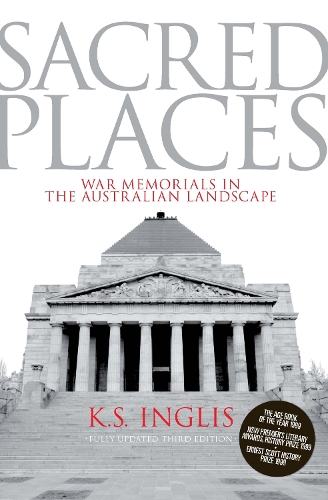
Sacred Places: War Memorials in the Australian Landscape
(Paperback, Third Edition)
Publishing Details
Sacred Places: War Memorials in the Australian Landscape
By (Author) K.S. Inglis
Melbourne University Press
Melbourne University Press
1st April 2008
Third Edition
Australia
Classifications
General
Non Fiction
Military institutions
Social and cultural history
306.9
Physical Properties
Paperback
576
Width 158mm, Height 232mm, Spine 49mm
810g
Description
Memorials to Australian participation in wars abound in our landscape. From Melbourne's huge Shrine of Remembrance to the modest marble soldier, obelisk or memorial hall in suburb and country town, they mourn and honour Australians who have served and died for their country. Surprisingly, they have largely escaped scrutiny. Ken Inglis argues that the imagery, rituals and rhetoric generated around memorials constitute a civil religion, a cult of ANZAC. Sacred Places traces three elements which converged to create the cult- the special place of war in the European mind when nationalism was at its zenith; the colonial condition; and the death of so many young men in distant battle, which impelled the bereaved to make substitutes for the graves of which history had deprived them. The 'war memorial movement' attracted conflict as well as commitment. Inglis looks at uneasy acceptance, even rejection, of the cult by socialists, pacifists, feminists and some Christians, and at its virtual exclusion of Aborigines. He suggests that between 1918 and 1939 the making, dedication and use of memorials enhanced the power of the right in Australian public life. Fi
Author Bio
Ken Inglis is one of Australia's most esteemed historians. He has been Professor of History at the Australian National University and the University of Papua New Guinea, and Vice-Chancellor of the latter. He was a general editor of Australians- A Historical Library (eleven volumes) and chairman of the editorial board of the Australian Dictionary of Biography (MUP), and continues to be a vigorous contributor to public debate. His books include Australian Colonists and This Is the ABC.
